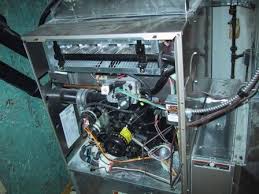 The purpose of this article is to drive home the point that you must provide annual preventive furnace maintenance. Your furnace is an extremely expensive component of your home heating and cooling system.
The purpose of this article is to drive home the point that you must provide annual preventive furnace maintenance. Your furnace is an extremely expensive component of your home heating and cooling system.
Everyone knows that any mechanical device, be it a car, boat or tractor has lower repair costs and runs more efficiently and safely if you keep up with your maintenance. Similarly, annual furnace maintenance is necessary for the safe and efficient operation of your heating furnace. Annual preventative maintenance is the best way to eliminate costly breakdowns and repairs. For example, you know you need to change the oil in your car every 3,000 – 5,000 miles; and, if you own a boat you very well know that you better get it winterized. Failure to change the oil in your car can result in significant complications, engine failure and breakdown. Failure to properly winterize a boat can cause complete engine failure in the late Spring or early Summer months when you launch it the following year.
Here are a few important aspects of preventive furnace maintenance by component:
The Heat Exchanger
The condition of the heat exchanger is a primary concern when performing preventive maintenance on the furnace. If there is any hole or crack in this unit, then carbon monoxide might leak into your home and cause various health issues. Two symptoms of carbon monoxide in the home include headaches and a feeling of drowsiness. This is one reason homeowners with a gas furnace need to have CO2 detectors set up in their home.
A trained technician will perform various tasks when inspecting the heat exchanger. One way to do this is to use a video-scope or a mirror. Visual operation of the burner might also be done to ensure that there is no abnormal activity, such as a flame roll-out or flame deflection. If abnormal operation is being observed, then a hole or crack may be present in the heat exchanger.
The Flue
The flue is part of the furnace that is used to vent gases. If the flue is not capped properly, then birds or other animals can easily create blockage. Again, any blockage of the flue can cause carbon monoxide poisoning in the home.
Fresh Air Intake
Many homes have a fresh air intake that is necessary for proper venting of the furnace. A screen on the fresh air intake can become clogged and prevent the flue from venting properly. Scheduling preventive maintenance for your furnace will ensure there is no blockage on this screen.
Safety Controls
There are various safety controls found on modern furnaces. These need to be checked to make sure all are operating correctly. Basic safety controls will include flame roll-out sensors, flame rectifying sensors, a high temperature limit switch, and temperature and draft pressure sensors.
Furnace Efficiency
There are quite a few things that can negatively impact the efficiency of a furnace. This includes the burners being out of alignment, too much combustion air, too little combustion air, burners that may need to be cleaned, a dirty manifold, and improper gas manifold pressure. The best way to determine if the unit in your home is operating efficiently is to perform a combustion analysis.
Air Flow
Proper air flow is needed for a furnace to achieve optimal performance. There are many things that can affect the air flow for a furnace. This includes the duct system in your home, the blower wheel, furnace air filter, and the evaporator coil. A visual inspection of these items will be performed and cleaned if needed.
If you have any questions about furnace maintenance, contact us for more information.


